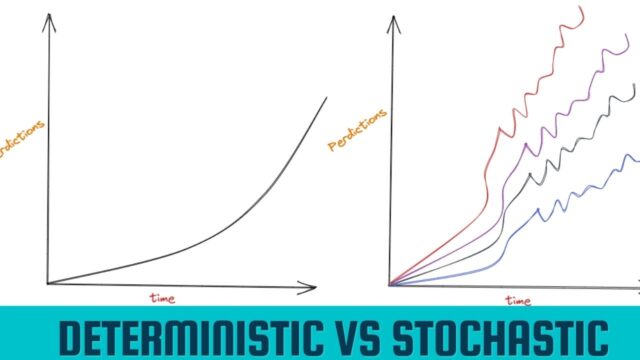
Machine learning is one of the most popular methods in business today for improving decision-making and achieving better insights into customer behavior. But not all machine learning algorithms are created equal.
One major distinction is between deterministic and stochastic machine learning. Deterministic learning involves using rules and patterns to make predictions with as much certainty as possible, while stochastic learning leverages probability and uncertainty to deal with complex data sets. Each approach has its advantages and disadvantages. In this post, we’ll explore each approach and help you decide which one is best for your business.
Deterministic Machine Learning
Deterministic learning involves creating a specific algorithm that can produce a definitive answer for any given input. The advantage of this approach is that it’s easy to understand and explain. In financial services, for example, a deterministic algorithm can be used to identify fraudulent money transfers based on a set of rules that have been put in place in order to detect fraud. This has the advantage of being highly effective and easy to understand.
The downside to deterministic learning is that it lacks flexibility and can struggle with complex or constantly changing data. Put simply, once you’ve created a deterministic algorithm, it may be difficult to tweak it to account for new variables that arise in the future. This can be problematic if you need to use your model over a long period of time or if your data is highly variable.
Stochastic Machine Learning
Stochastic learning, on the other hand, leverages probability and uncertainty to make predictions. It is particularly useful in situations where the data is non-linear, noisy, or has a large number of variables. In stochastic learning, you start with a set of possible outcomes and then assign probabilities to each outcome based on the data. The algorithm then uses these probabilities to create a prediction.
The advantage of stochastic learning is that it can be incredibly flexible and can adapt to new data over time. This means that it’s well-suited to situations where patterns might not be obvious or there are many variables at play.
However, stochastic learning has its own downsides. Because it relies on probability and uncertainty, there’s always a chance that the algorithm will get it wrong. This can be problematic if you’re using the algorithm to make important decisions, such as in healthcare or finance, where even small mistakes can have major consequences.
Which One Is Right for Your Business?
So, which type of machine learning is right for your business? As with most things in life, there’s no easy answer. It all depends on your specific use case, the type of data you’re working with, and the goals you’re trying to achieve.
If your data is relatively simple and you’re looking for an algorithm that’s easy to understand and explain, deterministic learning might be the way to go. However, if your data is complex and constantly changing, stochastic learning may be the better choice.
It’s also worth noting that many businesses use a combination of both types of machine learning. For example, you might use deterministic learning to detect fraudulent transactions, but then use stochastic learning to identify patterns in customer behavior that aren’t immediately obvious.
Conclusion:
Deterministic and stochastic machine learning are both powerful tools for improving decision-making and gaining valuable insights into customer behavior. Ultimately, the choice between the two comes down to your specific use case and the type of data you’re working with. By understanding the strengths and weaknesses of each approach, you’ll be better equipped to make an informed decision and choose the machine learning method that works best for your business.


































